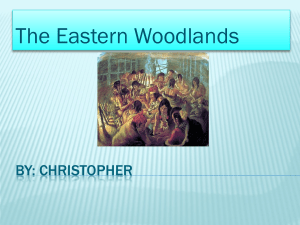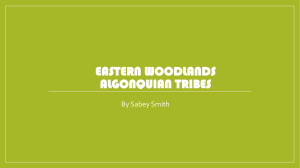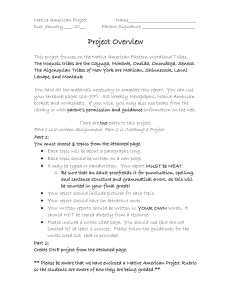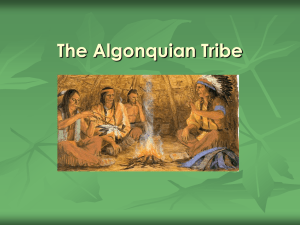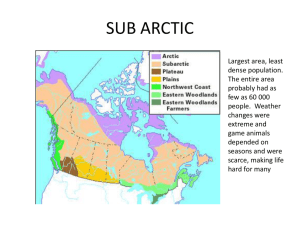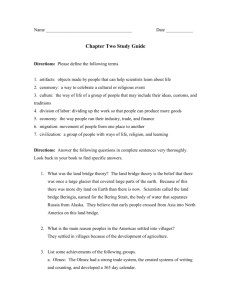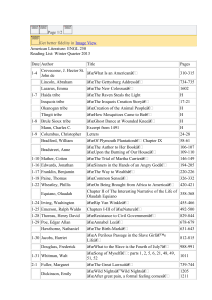Algonquin native americans of the eastern woodlands
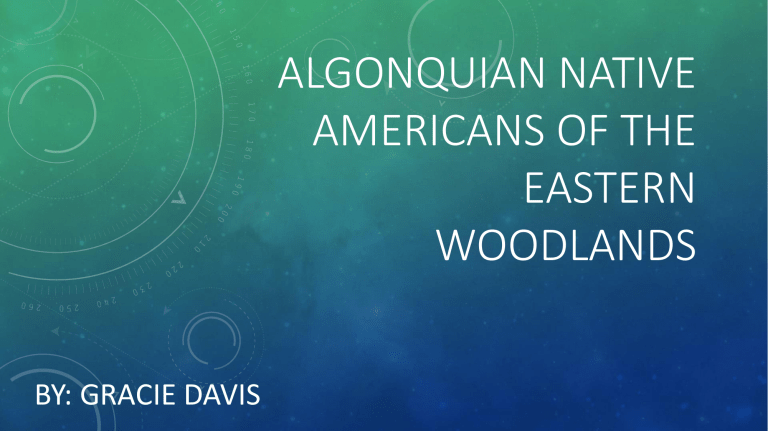
BY: GRACIE DAVIS
ALGONQUIAN NATIVE
AMERICANS OF THE
EASTERN
WOODLANDS
WHY DID I PICK THE ALGONQUIAN
INDIANS??
REGION
Location: Southwest Ontario, Southern Ontario,
Southern Quebec, and the Maritime Provinces (New
Brunswick, Nova Scotia and Prince Edward Island)
Nations: Ojibwa, Ottawa, Nipissing, Algonquian,
Maliseet, Mi’kmaq and Abeneki
“
Regional Characteristics
Land
Woods
Lakes
Plentiful Birch Trees
Climate
Experiences all four seasons.
Hot summers.
Cold winters.
”
Algonquian Tribe – Origin Story
When Kloskurbeh, the All-Maker, lived on earth, there were no people yet. But one day a youth appeared, born from the foam of the waves, and became his chief helper. After these two beings had created all manner of things, there came to them a beautiful girl. She was born of the wonderful earth plant, and of the dew, and of warmth.
First Mother (as she was called) married the chief helper of Kloskurbeh. When their children multiplied until there was not enough game to feed them all, First
Mother made her husband kill her. Then he and his children dragged her body back and forth across a barren plot of lands, as she had ordered, and buried her bones in the center of the field. Seven months later they returned and found the field green with ripe corn and, in the center, fragrant tobacco.
Algonquian Tools / Artifacts
Turkey Feathered Ceremonial Cape: Made of turkey feathers and used for special occasion such as a Cry Ceremony. This ceremony takes place when a persons dies and lasts for five days.
Birch Bark Canoe: The cedar bark made is light weight and fast.
Jewelry: The men wore nose and earrings made of silver. The jewelry was so heavy it stretched the skin in to loops which was admired. Some were as big as two to three inches.
SURVIVAL:
SUMMER
In the summer the tribe mostly fished but hunted as well. The white tailed deer was the most important animal.
The tribe also collected berries and raised squash, beans, pumpkins and melons.
SURVIVAL:
WINTER
In the winter, when the lakes were frozen, they were nomadic following large game and trapping small animals.
CLOTHING
The tribe’s clothing changed with the weather due to the hot summers and cold winters.
Their clothes were made from mostly mammal, bird and fish skins, either pelts or the hide. The animal skins were tanned and stretched to make soft usable leather. Deer skin was the most popular.
Men’s Mi’kmaq Moccasins Women’s Chippewa Moccasins
WIGWAMS
Round
One Family
Made of Birch
Temporary
LOGHOUSE
Rectangle
Multiple Families
Made of Birch
Semi-Permanent
Fun facts
The Woodland Indians pulled out most of their hair, except for a square or round part that covered the top of their head.
Unlike the Iroquois to the west, the Algonquian tribes in the Eastern Woodland were not involved in war or fighting. Their relationship with the Iroquois varied but was often unfriendly.
Face paint was very important to the Algonquians and they wore it to express feelings.
Red = Life Black = Death / Greif Purple = Royalty
Fun facts
The Algonquians speak two languages:
Central Algonquian and Eastern Algonquian
The Algonquians wore masks to cure diseases. Scary masks were used to scare the evil spirit out of a sick person.
The Algonquian Cinderella is named Broken Wing and the Prince was named
The Invisible Hunter
